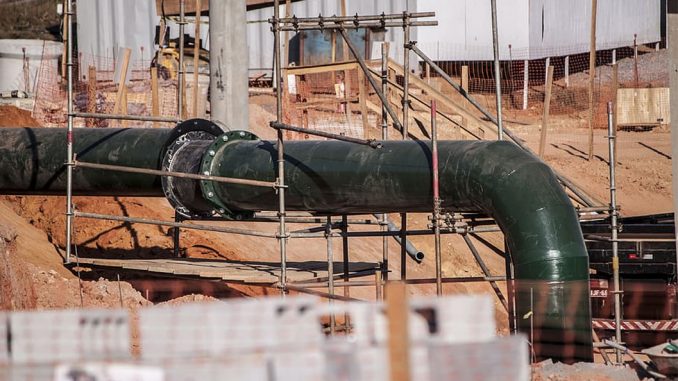
A pipeline carrying a chemical such as sulphuric acid is going to be subjected to a lot more stress than your average water pipe. It is therefore important to get the material used correct for a variety of reasons but most important of all, safety.
Any failure of a sulphuric acid pipeline can have devastating consequences. Not only is the fluid itself highly dangerous, but many lines operate at pressures in excess of 20 bar and at extreme temperatures up to 204℃. A sudden leak on such a line spewing a pressurised jet of boiling acid does not bare thinking about.
When it comes to sulphuric acid, pipeline materials must have excellent corrosion resistance and durability. Shutting down systems to repair or replace damaged parts is a costly and hazardous task, nor can leaks be ignored as they might on a water network for example.
The longer that a system can remain in operation, the better as there is no shortcutting when it comes to the maintenance of pipes carrying dangerous chemicals.
Materials used for piping acid have developed over time. As new compounds are invented with better resistance to corrosiveness and extreme temperatures, these are incorporated into petrochemical refineries across the world to improve the performance of pipes transporting sulphuric acid.
Previously, the most popular piping for sulphuric acid used to be ductile cast iron. First discovered in 1943 by an American metallurgical engineer Keith Millis, ductile iron has much more impact and fatigue resistance than standard cast iron due to the inclusion of nodular graphite.
Many water and sewer lines are made from ductile iron, which might leave you wondering just how suitable it is for carrying a more volatile substance like sulphuric acid? The answer is not very.
There are numerous problems when it comes to using ductile iron to transport acid. Sections of ductile iron pipe cannot be connected by screws and so lines require a large number of flanges.
Joints involving flanges are susceptible to leaks caused by corrosion, wearing out of the gasket and poor or improper installation. Whilst a leaking flange is not necessarily a problem when water is involved, it certainly is when it comes to acid.
Sulphuric acid can corrode ductile iron at a rate of 2mm per year. This means that in refineries where ductile iron is present, sulphuric acid pipeline reinforcement is commonplace as degradation of the line leaves it thin and brittle.
The high corrosion rate means that ductile iron lines must be larger in diameter, thus taking up more room. This gives them a high installation cost as materials are heavier, and bigger maintenance costs.
As a result of all that, ductile iron is finding itself replaced by alloy systems. Alloy pipelines are welded rather than being connected via flanges, reducing the number of weak areas where leaks could occur.
They corrode at a rate of less than 0.1mm per year and as such, line sizes are reduced. Smaller pipes allow petrochemical plants to make better use of their space.
Lower weight means easy installation and an alloy pipeline requires nowhere near the levels of maintenance that come with ductile iron, reducing operating costs.
The one concern when it comes to alloy piping systems is the presence of water. Sulphuric acid pipelines will often be tested by having water flushed through them, checking for leaks before acid is introduced.
If this water is not completely removed by draining the system and then purging with air until all moisture is removed, then it can react violently with acid. Water in turn weakens the acid and alloy piping is more easily damaged by weak acid than ductile iron.

Leave a Reply